The FSP Hydro G 750W Power Supply Review
by E. Fylladitakis on March 3, 2016 8:00 AM EST- Posted in
- PSUs
- Cases/Cooling/PSUs
- 750W
- FSP
- Modular
Hot Test Results
As we can see in the tables below, the FSP Hydro G 750W can deliver good electrical performance under stress. Our instrumentation recorded a maximum ripple of 40mV on the 12V line, a good figure for a PSU of this class. Similarly, the voltage ripple on the 3.3V and 5V lines is 26mV and 22mV respectively. The filtering is however strange, as the PSU's output power quality degrades at both high and low loads, unlike the vast majority of designs which only degrade as the load increases. The voltage regulation is adequate, at 2.8% for the 12V line, 3.3% for the 3V line and 2.9% for the 5V line.
| Main Output | ||||||||
| Load (Watts) | 153.07 W | 380.57 W | 562.39 W | 744.11 W | ||||
| Load (Percent) | 20.41% | 50.74% | 74.99% | 99.22% | ||||
| Amperes | Volts | Amperes | Volts | Amperes | Volts | Amperes | Volts | |
| 3.3 V | 2.2 | 3.41 | 5.49 | 3.39 | 8.24 | 3.33 | 10.98 | 3.29 |
| 5 V | 2.2 | 5.18 | 5.49 | 5.13 | 8.24 | 5.05 | 10.98 | 5.03 |
| 12 V | 10.98 | 12.22 | 27.45 | 12.16 | 41.18 | 11.98 | 54.9 | 11.89 |
| Line | Regulation (20% to 100% load) |
Voltage Ripple (mV) | |||||
| 20% Load | 50% Load | 75% Load | 100% Load | CL1 12V |
CL2 3.3V + 5V |
||
| 3.3V | 3.3% | 16 | 12 | 18 | 22 | 22 | 26 |
| 5V | 2.9% | 16 | 10 | 18 | 26 | 30 | 30 |
| 12V | 2.75% | 32 | 26 | 34 | 36 | 40 | 38 |
A high ambient temperature has a substantial negative impact on the electrical performance of the Hydro G 750W PSU. The average nominal load (20-100%) efficiency drops by 1.4%, while the maximum efficiency now is 90.6% at 50% load. Nevertheless, the drop is balanced across the entire load range and only slightly greater at maximum load, indicating that the components are not being overly stressed.
Due to the high ambient temperature, the fan of the Hydro G 750W PSU started with a load of 210 Watts this time and, naturally, began accelerating much quicker than before. Acoustics are being sacrificed but the Hydro G maintains comparatively low operating temperatures, surpassing 80°C only on the small secondary side heatsinks and under maximum load. Apparently, FSP does want this unit to remain quiet under normal operating conditions, but they are more than willing to sacrifice that acoustic comfort when the conditions are harsh in order to ensure the longevity of the PSU itself.


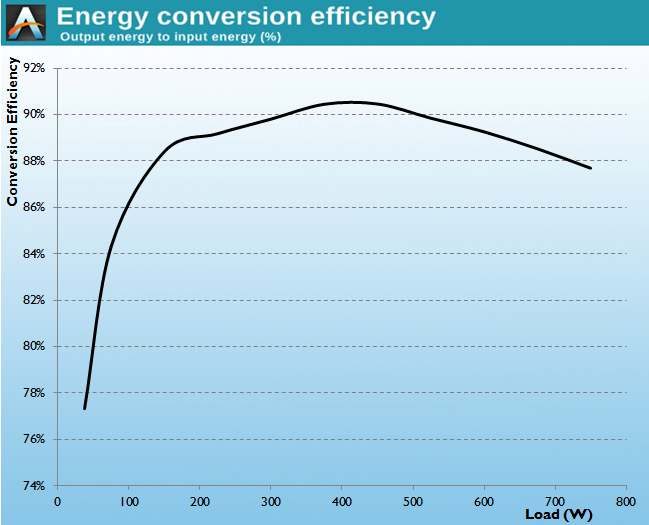
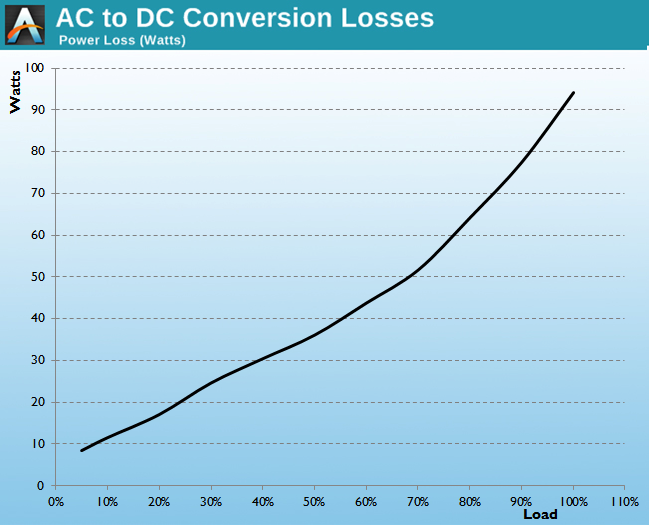
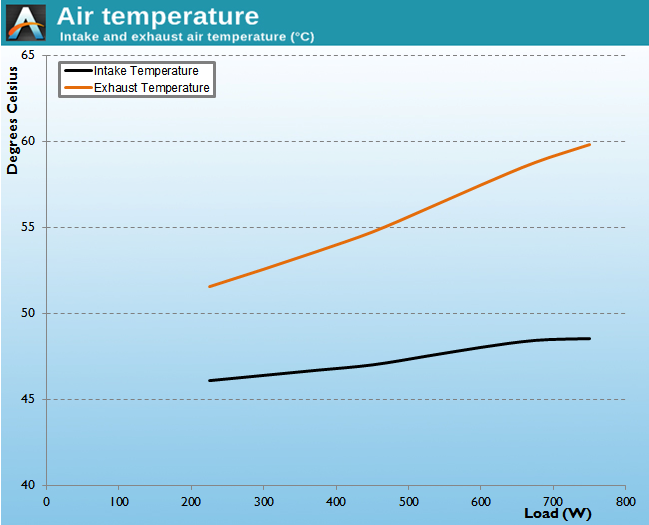
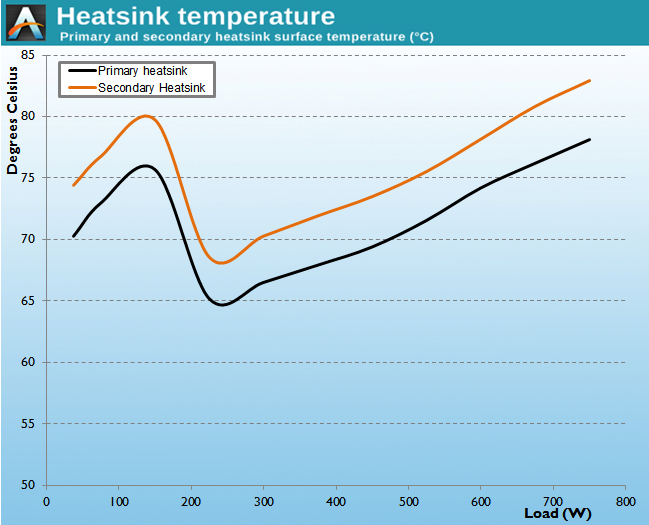
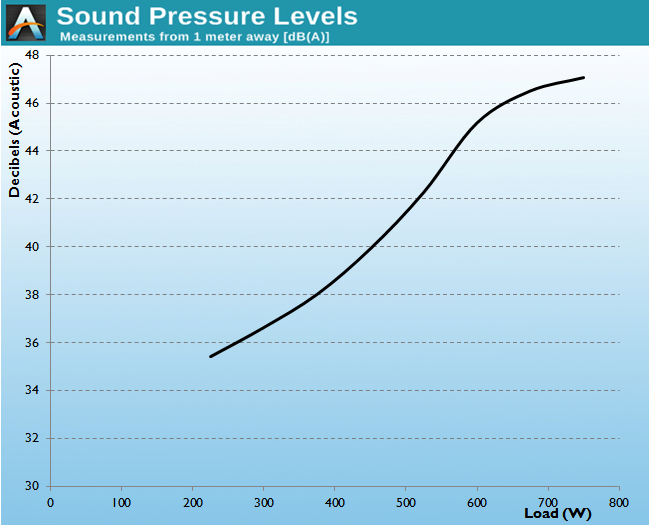








22 Comments
View All Comments
blahsaysblah - Thursday, March 3, 2016 - link
Not much seems to have changed with the actual PS design forever.PS + UPS in one(just a few minutes to shutdown safely and real surge protection and incoming voltage regulation).
PS combined with a CPU water cooler. They are usually in a key airflow spot in a lot of cases. Reduce noise and make it easier to keep cold air cold by combining two exhausts into one.
kaidenshi - Thursday, March 3, 2016 - link
"PS + UPS in one(just a few minutes to shutdown safely and real surge protection and incoming voltage regulation)."Indeed, I've never understood why we can't have a PSU/UPS combo in a full size PC, especially given the energy density of modern Lithium based rechargeable batteries. Maybe it's a safety issue? But then we've had Lithium batteries in laptops for about 20 years, that's a long time to perfect a design.
nathanddrews - Thursday, March 3, 2016 - link
I think you would both be interested in checking out some of the 5.25" battery backup units on the market. They are a bit niche and hard to find, but basically they are like what you are describing. The battery pack fits in a 5.25" drive bay and the PSU is connected through it.I think the main reason internal UPS aren't popular (outside the server market) is that desktop users have many other external devices connected that may also need to be powered down safely.
FuzionKore - Tuesday, March 8, 2016 - link
Exactly. Why invest in a PSU/UPS combo if your monitor dies anyways and you can't save what you were working on? The money is almost always better spent on a discrete UPS, unless somebody makes a unit with a power output for a monitor.5th element - Thursday, March 3, 2016 - link
Lithium ion batteries need to be kept cool otherwise their performance suffers quite badly. Inside a PSU is about the worst place you could put one.Wardrop - Friday, March 4, 2016 - link
How are you going to save your work and shutdown when your monitor is off? There's also often more to a PSU than just a battery. Adding all that to a PSU would make it quite expensive and extremely niche.Wardrop - Friday, March 4, 2016 - link
Replace the first "PSU" with "UPS".Murloc - Thursday, March 3, 2016 - link
a battery is pricey and useless to most people. What most people could use is a PSU able to survive a brown-out.But even then, it's probably more worth it to replace the PSU if something happens. I've had 1 PSU die on me in my whole life.
xenol - Monday, March 7, 2016 - link
If you're going to have a UPS anywhere, it should be at the mains. As another mentioned, what's the point if you can't see what you're doing?Also wouldn't want water anywhere near a PSU.
asmian - Thursday, March 3, 2016 - link
So it's called 'Hydro', but it's not water-cooled. Apart from generating click-bait product names, what on earth is their marketing team smoking?